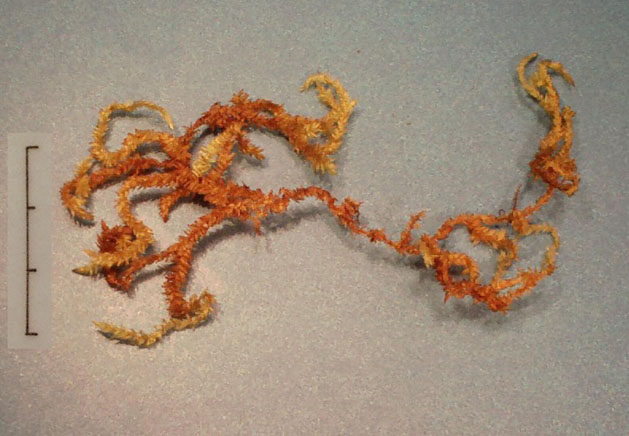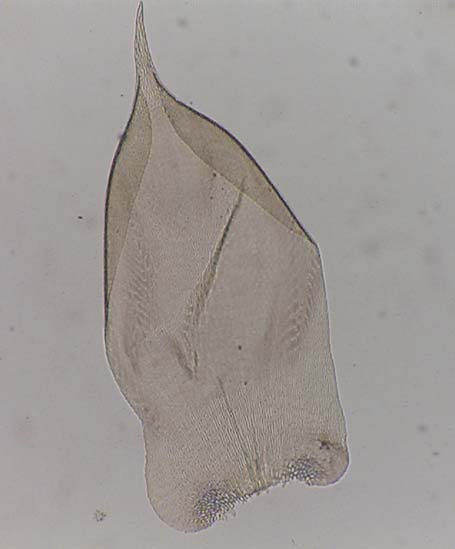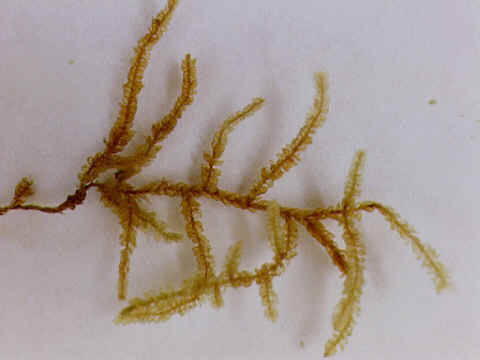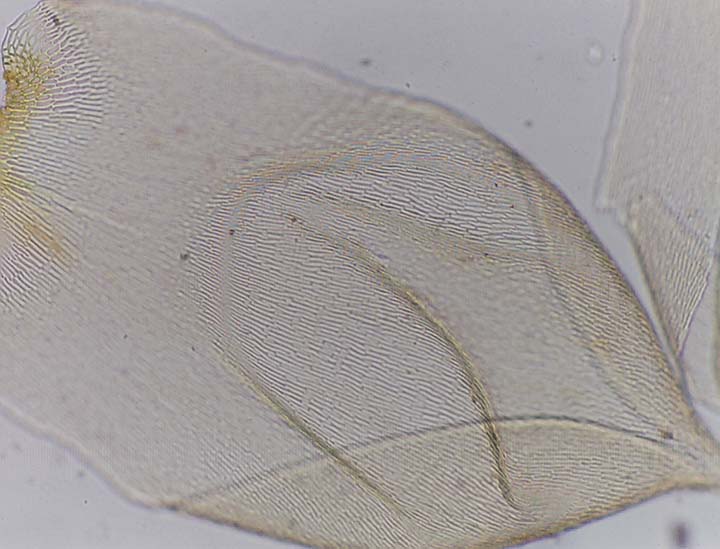![]()
|
|
|
|
|
NSF-PEET project in Systematic
Bryology
Missouri Botanical Garden
![]()
Phylogenetic Analyses
|
We collaborated with
the Shaw lab at Duke University to investigate monophyly of the traditionally
defined Meteoriaceae. We added
approximately 80 taxa to the data set described by Buck et al. (2000a &
b); the expanded data set includes 150 pleurocarpous taxa (plus eight
acrocarpous and cladocarpous taxa as outgroups) sequenced for two cpDNA loci:
rps4 and trnL-trnF. Our results
agree with suggestions made on the basis of morphology (Buck 1994, 1998,
Ignatov 1999) that the Meteoriaceae sensu Brotherus (1925) are
polyphyletic. From these results,
based on these two gene regions, the tradiational concept of the Meteoriaceae
is not supported. Instead the affinities of the genera are as follows: some
near the Brachytheciaceae, some near the Lembophyllaceae and a core group
that represents a monophyletic Meteoriaceae (Fig. 1). |
Clearly, the
traditional Meteoriaceae groups together taxa based on convergent
morphological characters apparently related to shifts between terrestrial and
epiphytic habitats. In agreement with
arguments made by Buck (1994) based on morphology, Pilotrichella s.s is closely related to Weymouthia, Lembophyllum, and Neobarbella
in the Lembophyllaceae. Bootstrap
support for the family is not strong (Fig. 1), however the groupings seen are
present in the strict consensus of all most parsimonious trees. |
|
Fig. 1.
One MPT tree from analyses of rps4
and trnL-trnF sequences of
pleurocarpous moss. Numbers in
parentheses indicate bootstrap support for selected families. Arrows indicate placement of taxa
traditionally included in the Leskeaceae, Anomodontaceae, or Thuidiaceae. |
|
|
One of our PEET
students, Michelle Price, spent three months in the Shaw lab working on these
phylogenetic analyses and also on molecular studies directly related to her
dissertation topic, a systematic revision of the dicranaceous genus, Holomitrium (Link to: Holomitrium
project). Ms. Price obtained
valuable information that complements her monographic work on Holomitrium, including species-level
phylogeographic data that provide evidence of vicariance between Old- and New
World populations, and an investigation of the phylogenetic relationship
between Holomitrium and close allies in the subfamily Dicranoideae
(Dicranaceae). Link to projects on Eucamptodontopsis
and Schliephackea, and Macrodictyum.
|
|
|
Brotherus, V.F.
1924-1925. Musci (Laubmoose). Spezieller Teil. In A. Engler (ed.),
Die natürlichen Pflanzenfamilien, ed. 2 10, 11. Wilhelm Englemann, Leipzig. Buck, W. R.
1994. A new attempt at understanding
the Meteoriaceae. J. Hattori Bot.
Lab. 75: 51-72. _____.
1998. Pleurocarpous mosses of the
West Indies. Mem. NY Bot. Gard. 82:
1-400. _____, B.G.
Goffinet, & A.J. Shaw. 2000a.
Testing morphological concepts of orders of pleurocarpous mosses
(Bryophyta) using phylogenetic reconstructions based on trnL-trnF and rps4
sequences. Mol. Phyl. Evol. 16:
180-198. _____.
2000b. Novel relationships in
pleuropcarpous mosses as revealed by cpDNA sequences. The Bryologist 103: 774-789. Ignatov, M.S. 1999. Bryophyte flora of the Hunan Peninsula, Papau, New Guinea. XLIII. On the pseudoparaphyllia in
Brachytheciaceae and Meteoriaceae (Musci).
Acta Bot. Fenn. 165: 73-83. |
|




